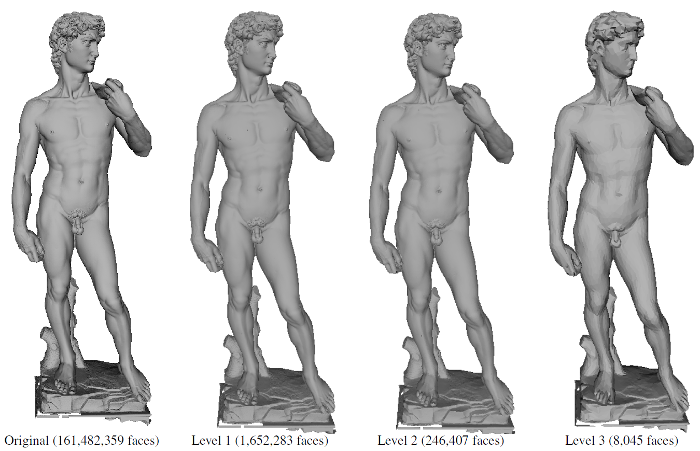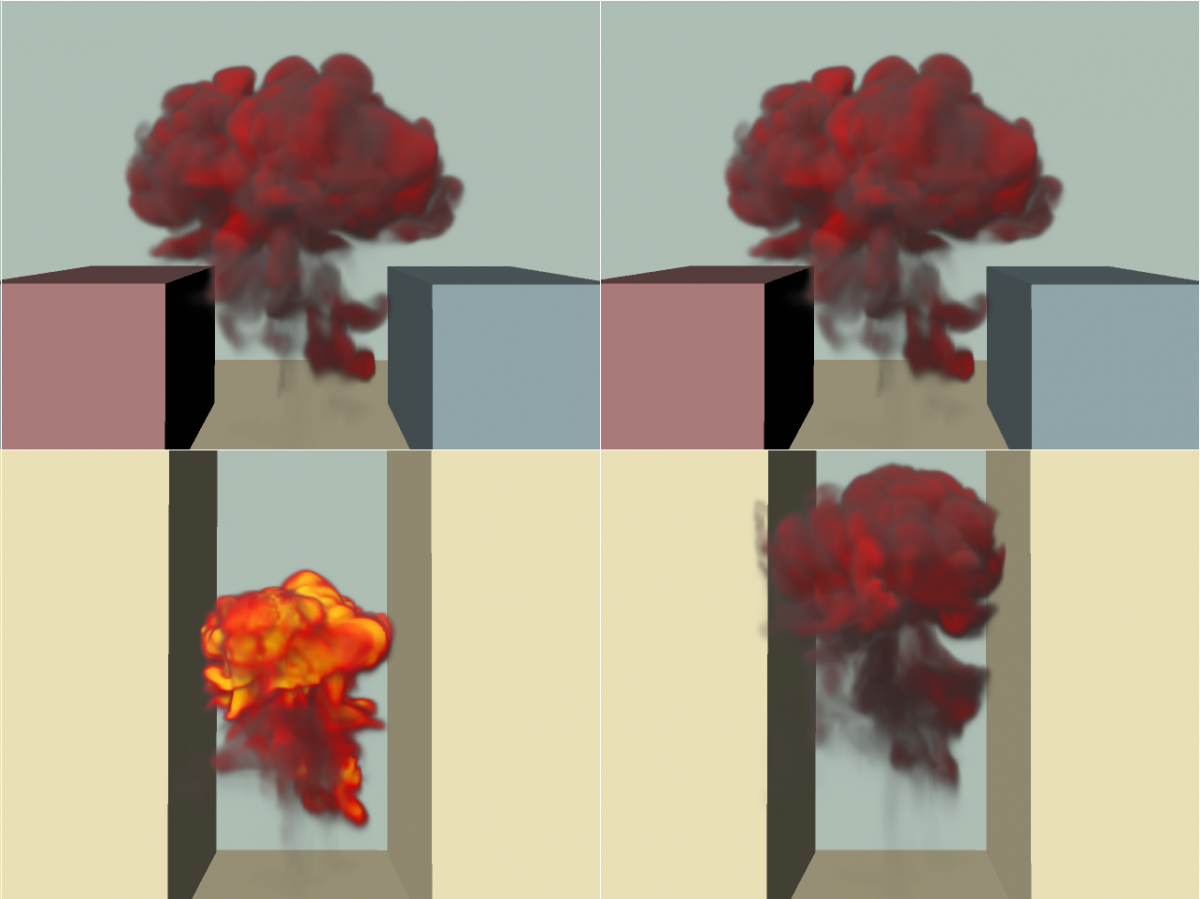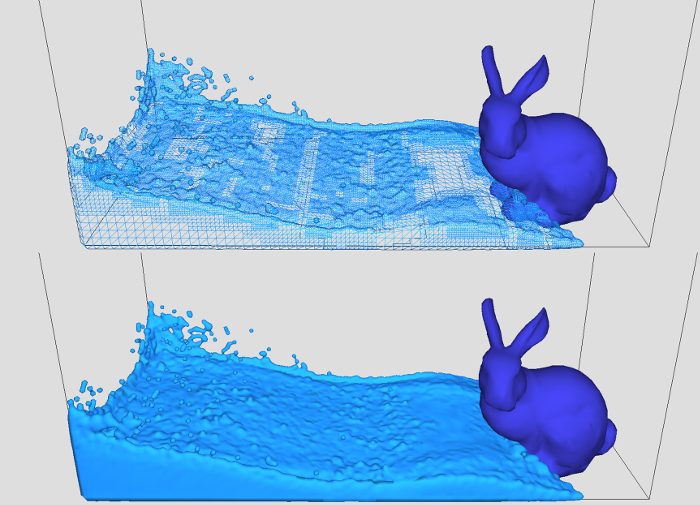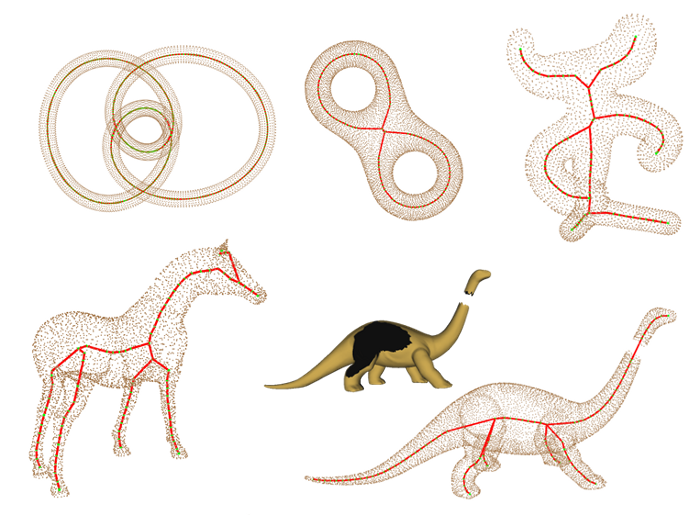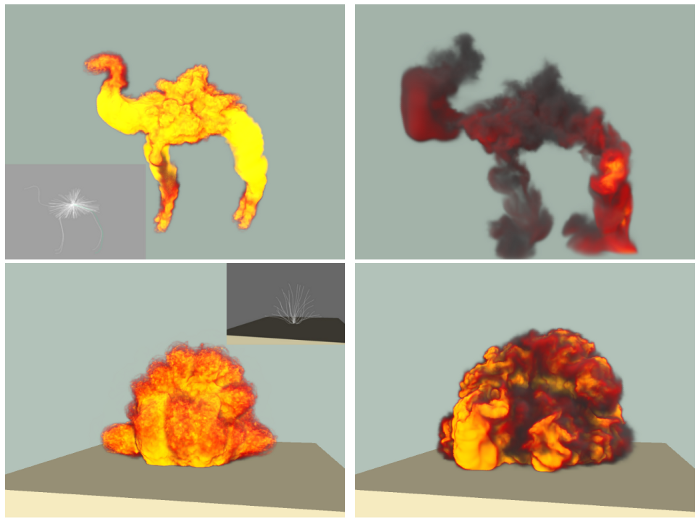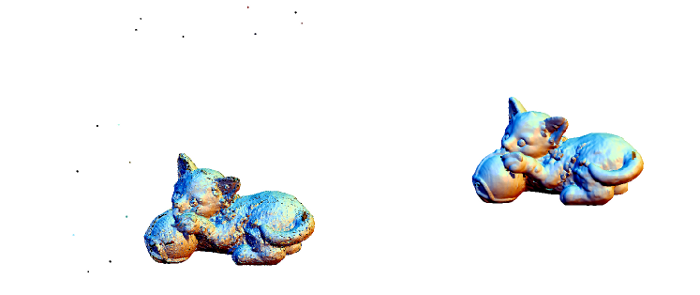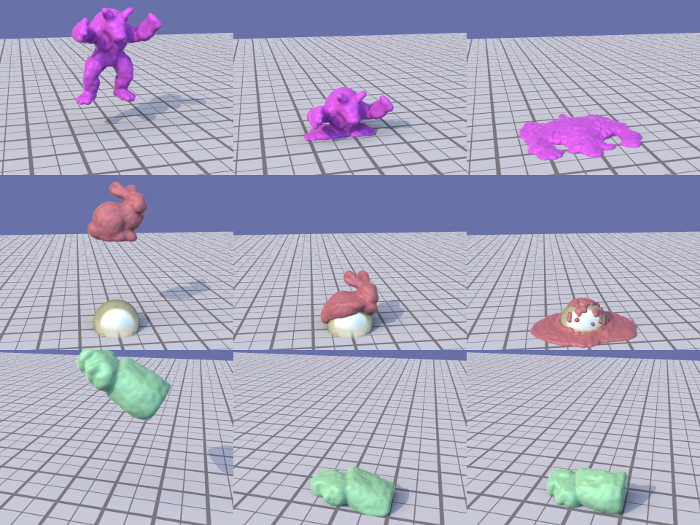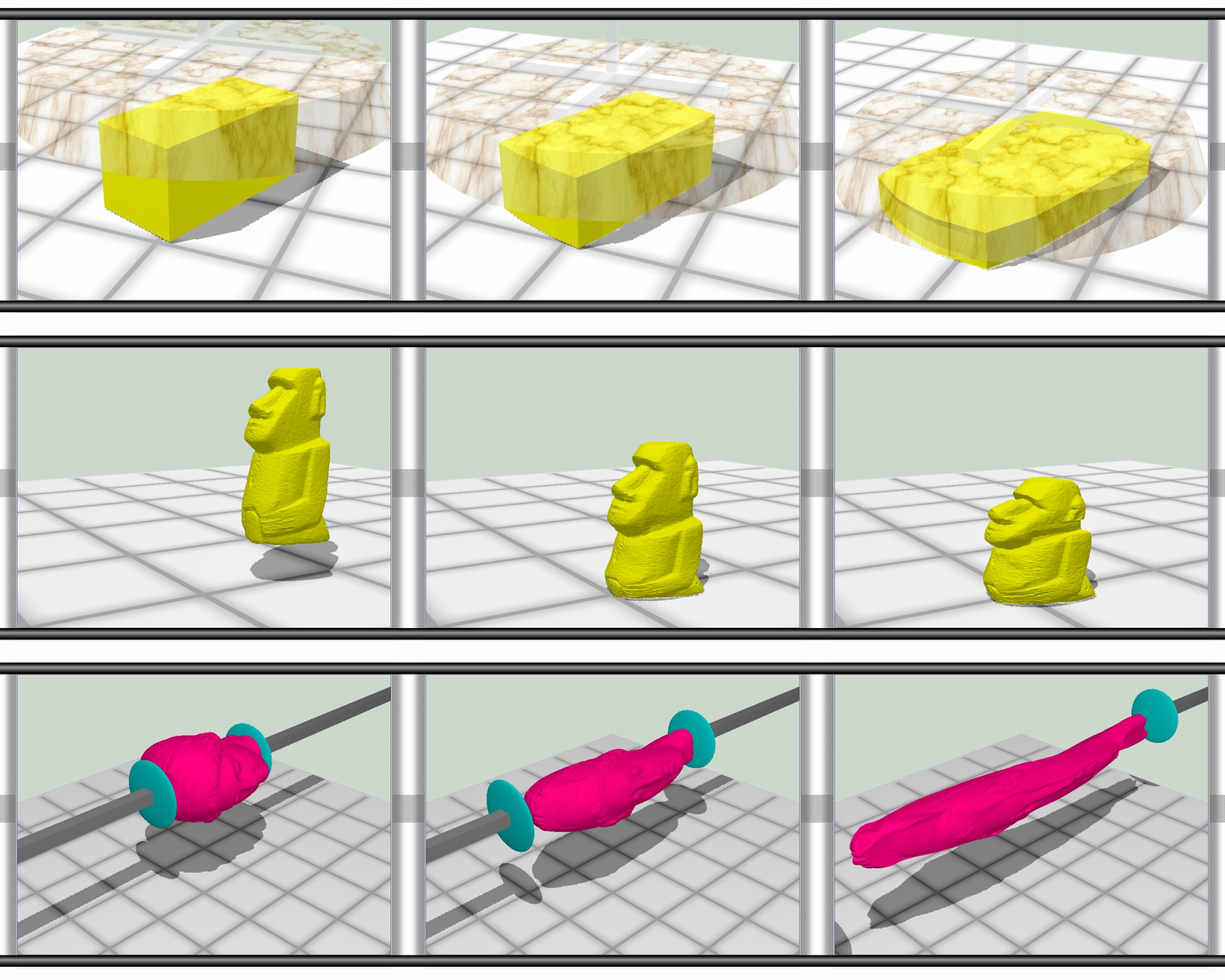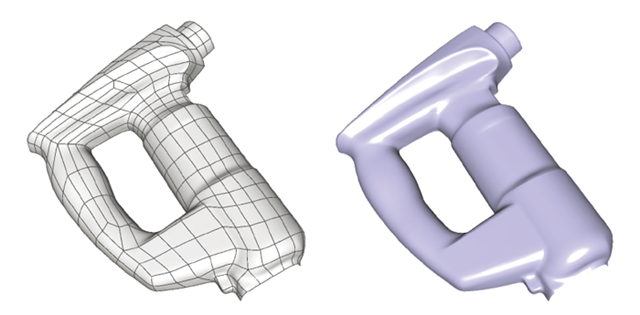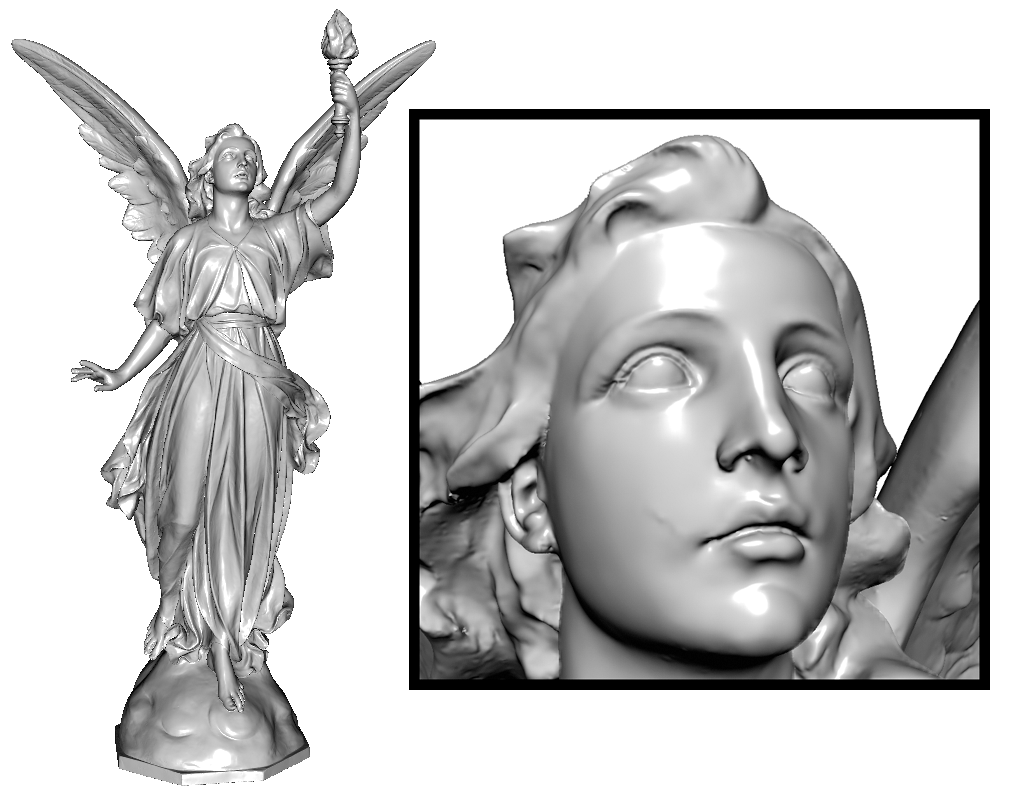In mesh simplification, in-core based methods using Quadric Error Metric (QEM), which apply a sequence of edge-collapse operations, can generate high-quality meshes while preserving shape features. However, these methods cannot be applied to huge meshes with more than 100 million faces, because they … Continue reading “Out-of-Core Framework for QEM-based Mesh Simplification”
Category: Research
Controlling the Shape and Motion of Plumes in Explosion Simulations
We propose a fluid simulation method with controlling the shape and motion of rising fire and smoke, called plumes, in the incompressible phase of explosion phenomenon. With our method, plumes are generated based on physical phenomenon called entrainment, which strongly characterizes plume behaviors … Continue reading “Controlling the Shape and Motion of Plumes in Explosion Simulations”
GPU-based Adaptive Surface Reconstruction for Real-time SPH Fluids
We propose a GPU-based adaptive surface reconstruction algorithm for Smoothed-Particle Hydrodynamics (SPH) fluids. The adaptive surface is reconstructed from 3-level grids as proposed by [Akinci13]. The novel part of our algorithm is a pattern based approach for crack filling, which is recognized as … Continue reading “GPU-based Adaptive Surface Reconstruction for Real-time SPH Fluids”
A Robust and Centered Curve Skeleton Extraction from 3D Point Cloud
A curve skeleton of a 3D object is one of the most important structures of the object, which is extremely useful for many computer graphics applications involving in shape analysis. Much research has focused on volumetric and polygonal mesh models. However, only a few have been paid attention to poi … Continue reading “A Robust and Centered Curve Skeleton Extraction from 3D Point Cloud”
Procedural Fluid Modeling of Explosion Phenomena Based on Physical Properties
We propose a method to procedurally model the fluid flows of explosion phenomena by taking physical properties into account. Explosion flows are always quite difficult to control, because they easily disturb each other and change rapidly. With this method, the target flows are described by control p … Continue reading “Procedural Fluid Modeling of Explosion Phenomena Based on Physical Properties”
Robust MLS Projection Operator for Point Clouds
In this research, we propose a robust projection operator for noisy point clouds with outliers. The operator is an extension of Moving Least Square (MLS) projection and inherits its smoothing property. A key idea is to compute average positions and projection directions to prevent the influence of o … Continue reading “Robust MLS Projection Operator for Point Clouds”
A Fast and Practical Method for Animating Particle-Based Viscoelastic Fluids
This research proposes a practical technique for fast animation of materials such as viscoelastic fluids. A fast animation of such materials is desperately desirable especially for real-time applications such as games. We compute the behavior of viscoelastic fluids approximately instead of the exact … Continue reading “A Fast and Practical Method for Animating Particle-Based Viscoelastic Fluids”
Volume-Preserving LSM Deformations
Surface deformations based on physically-based simulations are used to represent elastic motions such as human skins or clothes in the field of 3DCG applications. LSM (Lattice Shape Matching) [Rivers and James 2007] has particularly attracted attention as a fast and robust method which achieves elas … Continue reading “Volume-Preserving LSM Deformations”
Evaluation of Non-Uniform B-spline Surfaces on GPUs
In this paper, we propose a fragment-based evaluation method for non-uniform B-spline surfaces using recent programmable graphics hardware (GPU). A position on a non-uniform B-spline surface is evaluated by the linear combination of both control points and B-spline basis functions. Hence the computa … Continue reading “Evaluation of Non-Uniform B-spline Surfaces on GPUs”
GPU-based Rendering of Point-based Implicit Surfaces
Implicit surface is a well-known surface representation. Geometric details of an object can be represented using less surface primitives than other representations such as polygonal meshes. In this paper, we propose a fast and a direct rendering method of SLIM (Sparse Low-degree IMplicit) surfaces u … Continue reading “GPU-based Rendering of Point-based Implicit Surfaces”
